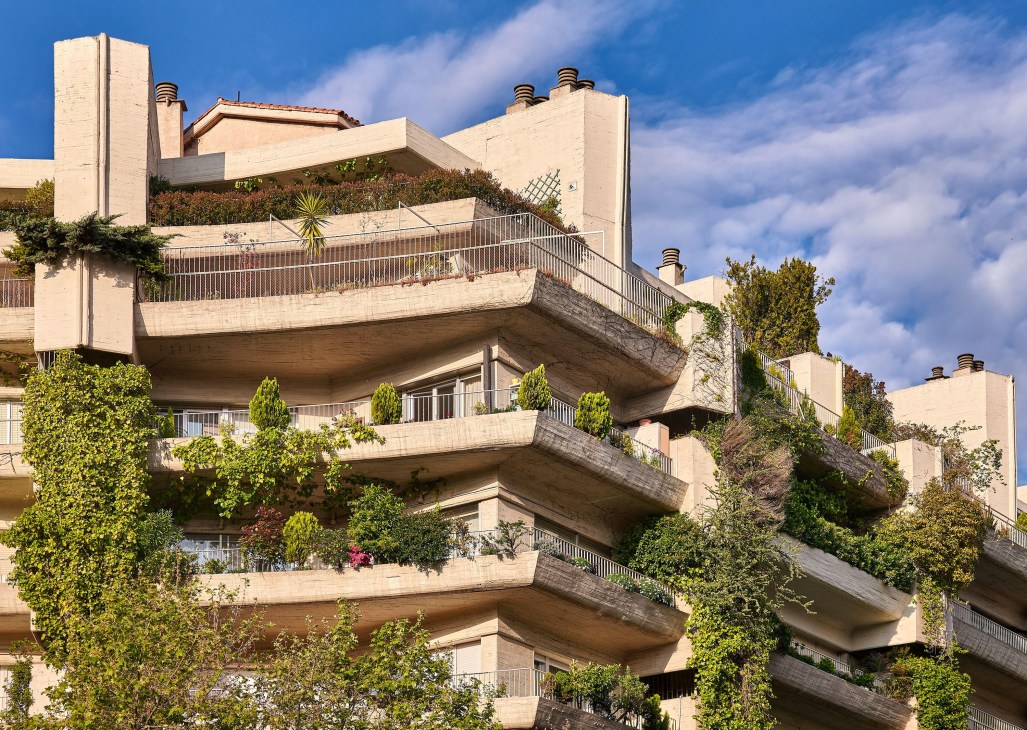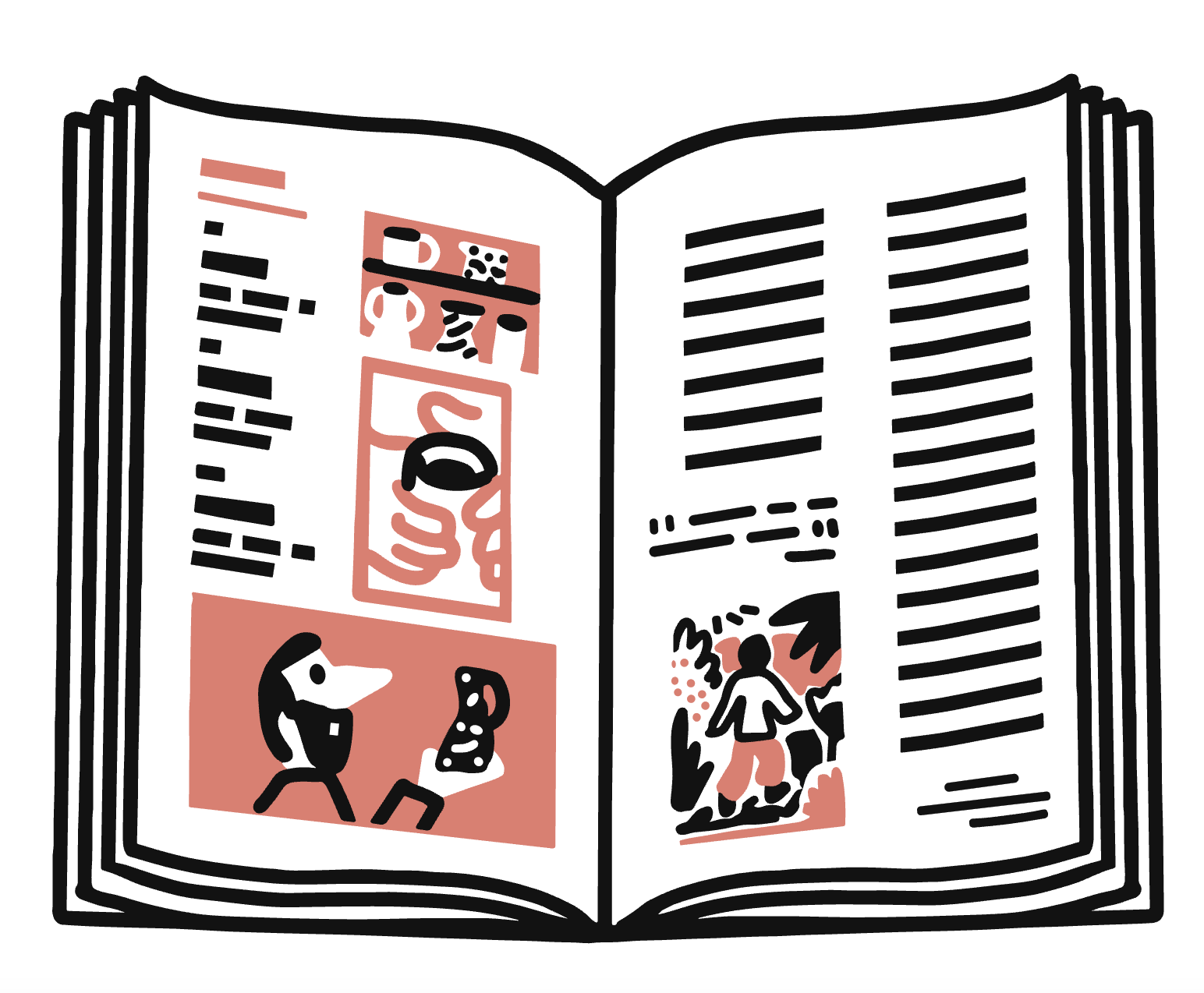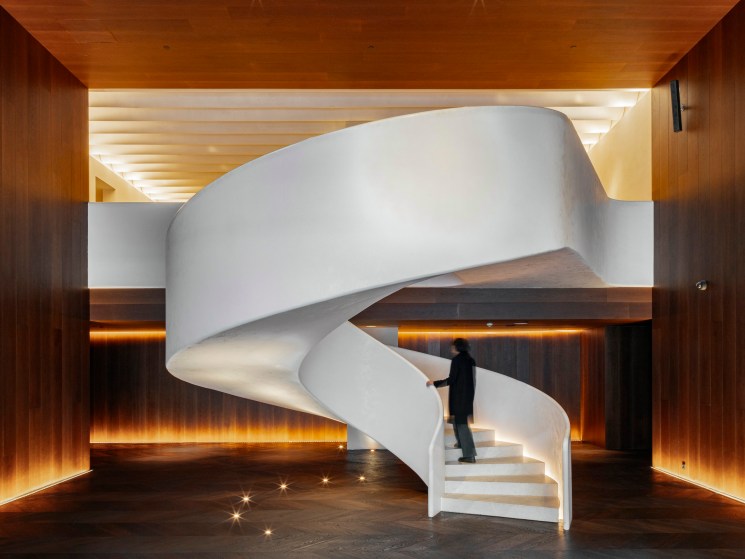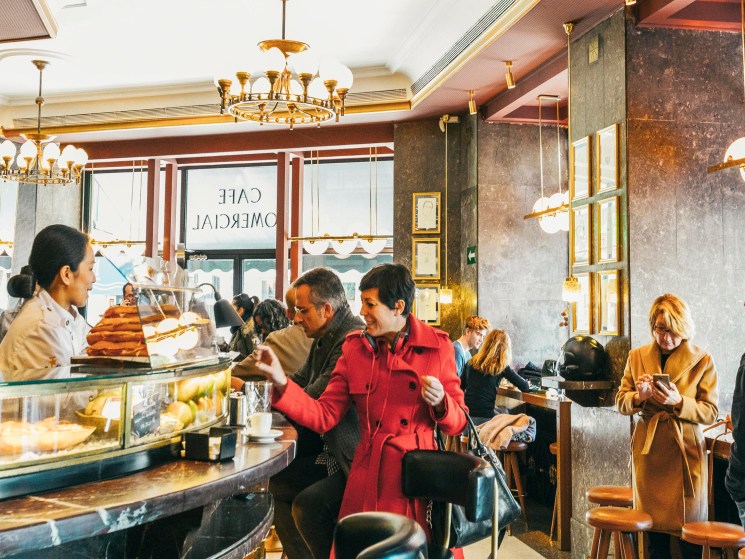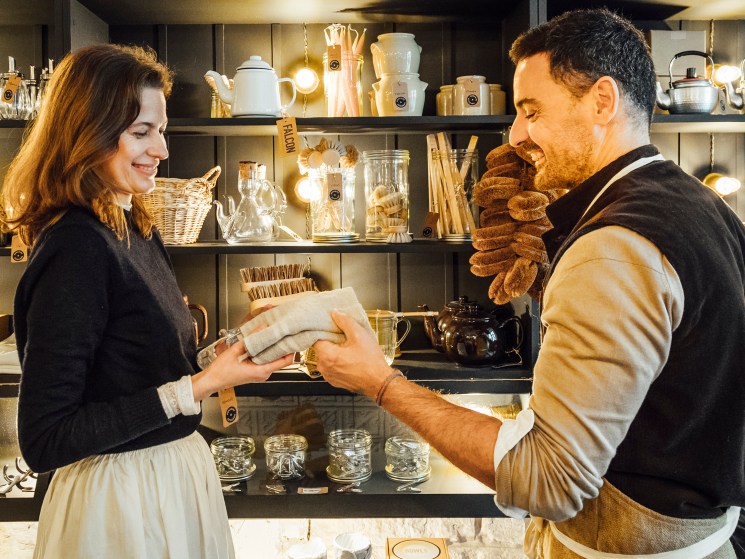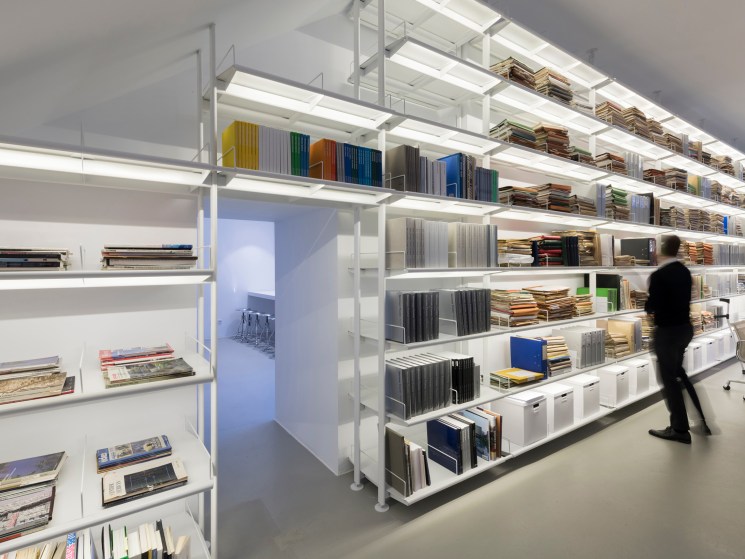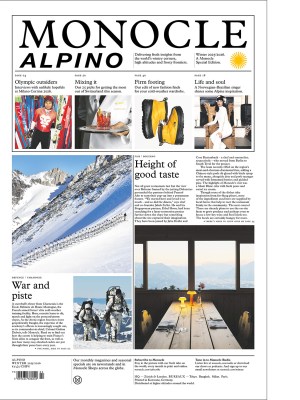Neighbourhoods
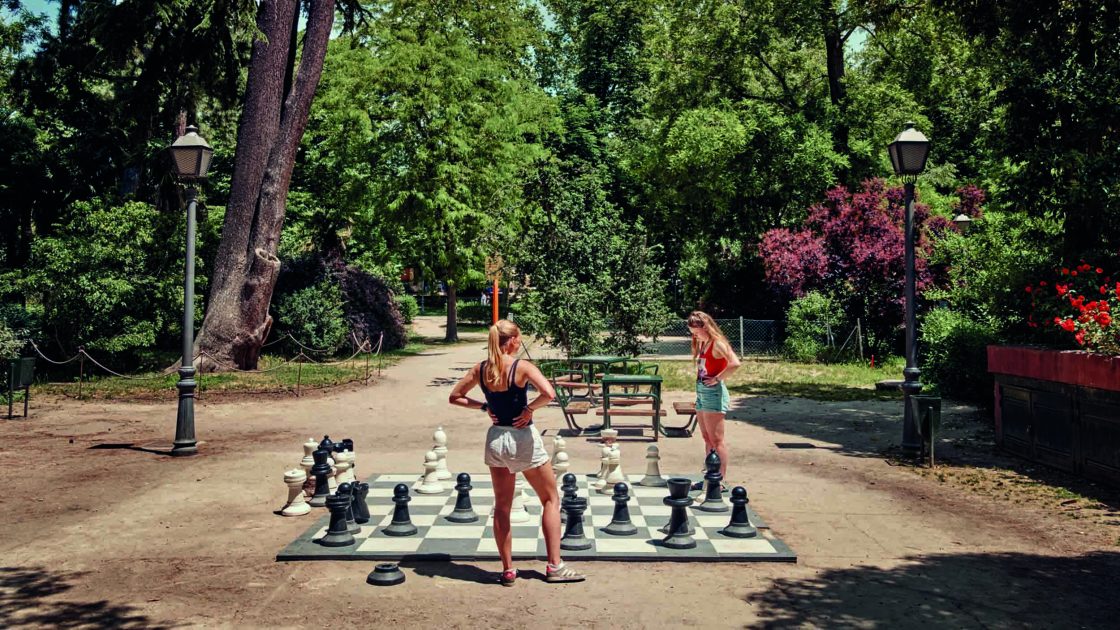
Malasaña and Conde Duque
These colourful sibling barrios share a fraternal sense of fun.
If you’re looking for action, the dual districts of Malasaña and Conde Duque offer it in spades. The brightly coloured streets are lined with a patchwork of bars, restaurants, specialist shops, galleries and design studios, while homes are inhabited by Madrid’s lively young creatives. Getting lost in its labyrinthine streets will lead to plenty of pleasant surprises but the best way to sample the energy is by taking yourself on a tour of the closely connected plazas. These vibrant community hubs are brimming with noise and activity from sunrise to sundown – a testament to the city’s comfortable climate and social spirit.
Start in the Plaza de San Ildefonso, where any of the available terrace seats are worth their prize, or grab an espresso from the adjoining Bianchi Kiosko Caffé. Continue to Plaza de Juan Pujol or Plaza Dos de Mayo for a host of heartier food options. Heading down Calle de la Palma is the best way to cross the border of Calle San Bernardo into the adjoining Conde Duque district. Here, our favourite pit stops include the corner tavern Bodegas El Maño and Plaza de Las Comendadoras, where you can choose from the antipodean-styled Federal Café or authentic Spanish bar El Cangrejero. Save some room for retail as you continue to Plaza de los Guardias de Corps, with shops such as Misia, Sportivo and Mini all dotted along the way. If you still have time, take a peek inside the Conde Duque Contemporary Cultural Centre, which is housed in the former barracks of the Royal Guard.
Take your time; any semblance of a rush and you’ll stick out like a sore thumb. Set aside a long afternoon, pull up a chair, grab a glass of wine and people-watch well into the night.
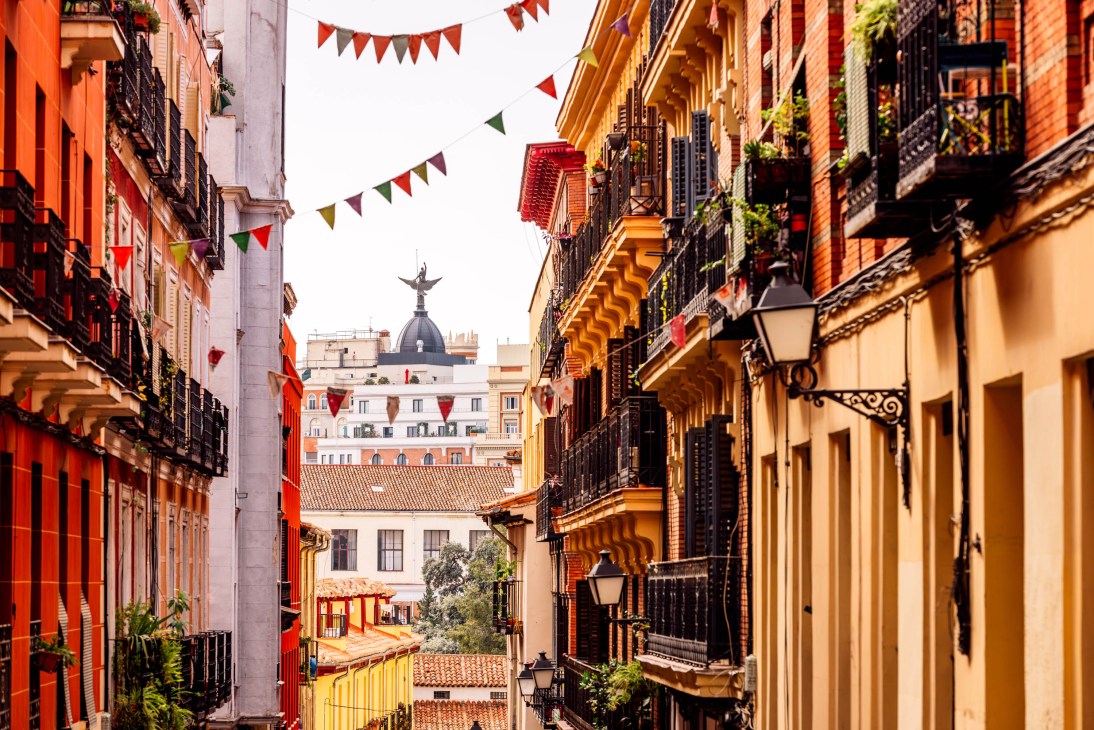
Lavapiés
A rich mosaic of exotic food and enduring heritage.
The multicultural makeup of Lavapiés has defined this district for centuries. It was originally a thriving Jewish quarter until the Alhambra Decree expelled all Jews from Spain in 1492. Today it still attracts diverse diasporas from Africa and Asia. Many theories surround the origin of the neighbourhood’s name. Some say Lavapiés, which translates to “wash feet”, is derived from the religious ritual of cleaning your feet before entering a temple. Others believe that it stems from the more practical custom of rinsing off dust in the small streams that once flowed down into the main plaza. The fountain and waterways have since vanished but the neighbourhood that has sprung up in their wake has a conspicuously international flavour: more than half of Lavapiés residents were born overseas.
Start with the Antón Martín market, which offers flavourful feasts from a variety of stalls. Once the rhythmic sounds of the Amor de Dios flamenco school on the top floor sate your appetite for spectacle, head to Candela – a legendary tablao (flamenco club) that has been transformed into a restaurant by an artist collective. On Calle de Lavapiés, you’ll find a string of culinary options from Africa, India and Bangladesh. Further down the hill, alongside the tower of Uned University, there’s plenty more fun and fare inside the San Fernando Market. Don’t miss Calle Doctor Fourquet, a strip lined with private art galleries and the maestro of espresso, Hola Coffee. Waiting for you at the end of this inspirational stroll are the works of modern Spanish masters, such as Picasso and Dalí, inside the Museo Nacional Centro de Arte Reina Sofía.
Chamberí
A lesser-known barrio, where Madrid explodes with life and creativity.
A quick inspection of the Chamberí’s rich variety of art nouveau, brutalist and modernist façades suggests that it is no stranger to change. By weaving their magic into creative ventures and architecture, as well as appetising new restaurants that sit among historical palaces and embassies, younger Madrileños have not only redefined this quarter’s appeal but also updated the Spanish capital’s image.
Such juxtapositions are best observed along Calle de Ponzano. Residents believe that no other European street boasts as many bars or restaurants. While this is difficult to verify, Calle de Ponzano’s competitive food culture is evident. Fresh produce is arranged in window displays, while traditional taberna Fide sits alongside a host of innovative restaurants. One of Madrid’s best examples of considered urbanism, Plaza de Olavide, is nearby. The circular court is girdled with lively terrace seating and punctuated by a fountain, trees, recliner benches and the odd ping-pong table. Explore its outer rim to find coffee shop pioneers Toma Café Olavide, the takeaway Alma Nomad Bakery and, further afield, cheese specialist Fromaje.
Chamberí’s differences are also evident in two of its oldest artistic attractions: the former residence of Valencian impressionist painter Joaquín Sorolla, now his eponymous museum, and the more auspicious Norman Foster Foundation, which is located in a restored palace that brims with modern art and design. This barrio is packed full of small-scale retail, restaurants and artistic ventures that it’s best to discover by wandering at your own pace. Let your sense of curiosity be your guide.
